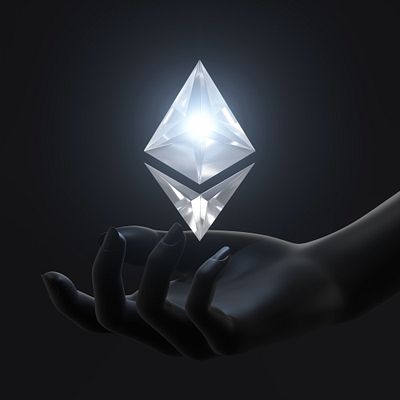Art Of Ethereum
The "art of Ethereum" can be understood in multiple contexts, including the visual representations, digital art, and the broader artistic and cultural implications of the Ethereum blockchain. Here’s a detailed exploration of these facets:
Visual Representations:
-
Logo and Branding:
- Ethereum Logo: The Ethereum logo is a minimalist, geometric shape representing a diamond or a pyramid. It has become iconic in the cryptocurrency world, symbolizing the Ethereum blockchain's strength, transparency, and innovation.
-
Infographics and Educational Art:
- Diagrams: Visual representations explaining how Ethereum works, including diagrams of smart contracts, decentralized applications (dApps), and the Ethereum Virtual Machine (EVM).
- Educational Posters: Posters and infographics that break down complex concepts into more digestible visual formats.
Digital Art and NFTs:
-
Non-Fungible Tokens (NFTs):
- Definition: NFTs are unique digital assets verified using blockchain technology, often representing digital art, collectibles, or other forms of media.
- Ethereum's Role: Ethereum is the leading blockchain for NFTs, thanks to its smart contract functionality. Platforms like OpenSea, Rarible, and Foundation are built on Ethereum and facilitate the creation, buying, and selling of NFTs.
- Artists and Collections: Many digital artists have gained prominence through NFTs. Collections like CryptoPunks, Bored Ape Yacht Club, and Art Blocks have become cultural phenomena.
-
Generative Art:
- Concept: Generative art involves algorithms and code to create artwork. On Ethereum, this often means using smart contracts to generate art pieces that are unique and stored on the blockchain.
- Platforms: Art Blocks is a notable platform where artists can create generative art that is minted as NFTs on Ethereum.
Broader Cultural Implications:
-
Decentralized Art Communities:
- DAOs (Decentralized Autonomous Organizations): These are organizations governed by smart contracts on Ethereum. In the art world, DAOs can be used to manage collective art projects, fund artists, or curate digital galleries.
- Community Projects: Ethereum has enabled the creation of community-driven art projects where participants can contribute to and influence the direction of the artwork.
-
Art Exhibitions and Events:
- Virtual Galleries: Platforms like Cryptovoxels and Decentraland offer virtual worlds where users can create and visit art galleries, hosting exhibitions and events in a decentralized manner.
- Physical Exhibitions: There are also physical art exhibitions that incorporate Ethereum and NFTs, showcasing digital art in traditional gallery settings.
Examples of Ethereum-Based Art Projects:
-
CryptoPunks:
- Description: One of the first NFT projects, consisting of 10,000 unique 24x24 pixel art characters.
- Significance: CryptoPunks have become highly valuable and are seen as pioneers in the NFT space.
-
Art Blocks:
- Description: A platform for creating generative art that is minted as NFTs. Each piece is unique and created by an algorithm.
- Significance: Art Blocks has gained significant attention for its innovative approach to digital art.
-
Beeple's "Everydays: The First 5000 Days":
- Description: A digital artwork by artist Beeple, sold as an NFT for $69 million at Christie’s auction house.
- Significance: This sale brought mainstream attention to the potential of NFTs and digital art.
Conclusion:
The art of Ethereum encompasses a rich and diverse landscape, ranging from its iconic visual branding to the groundbreaking world of NFTs and generative art. Ethereum's technology has not only revolutionized how art can be created, owned, and traded but also fostered new forms of artistic expression and community engagement. As the ecosystem continues to evolve, the intersection of art and Ethereum promises to be a dynamic and influential space in the digital age.

